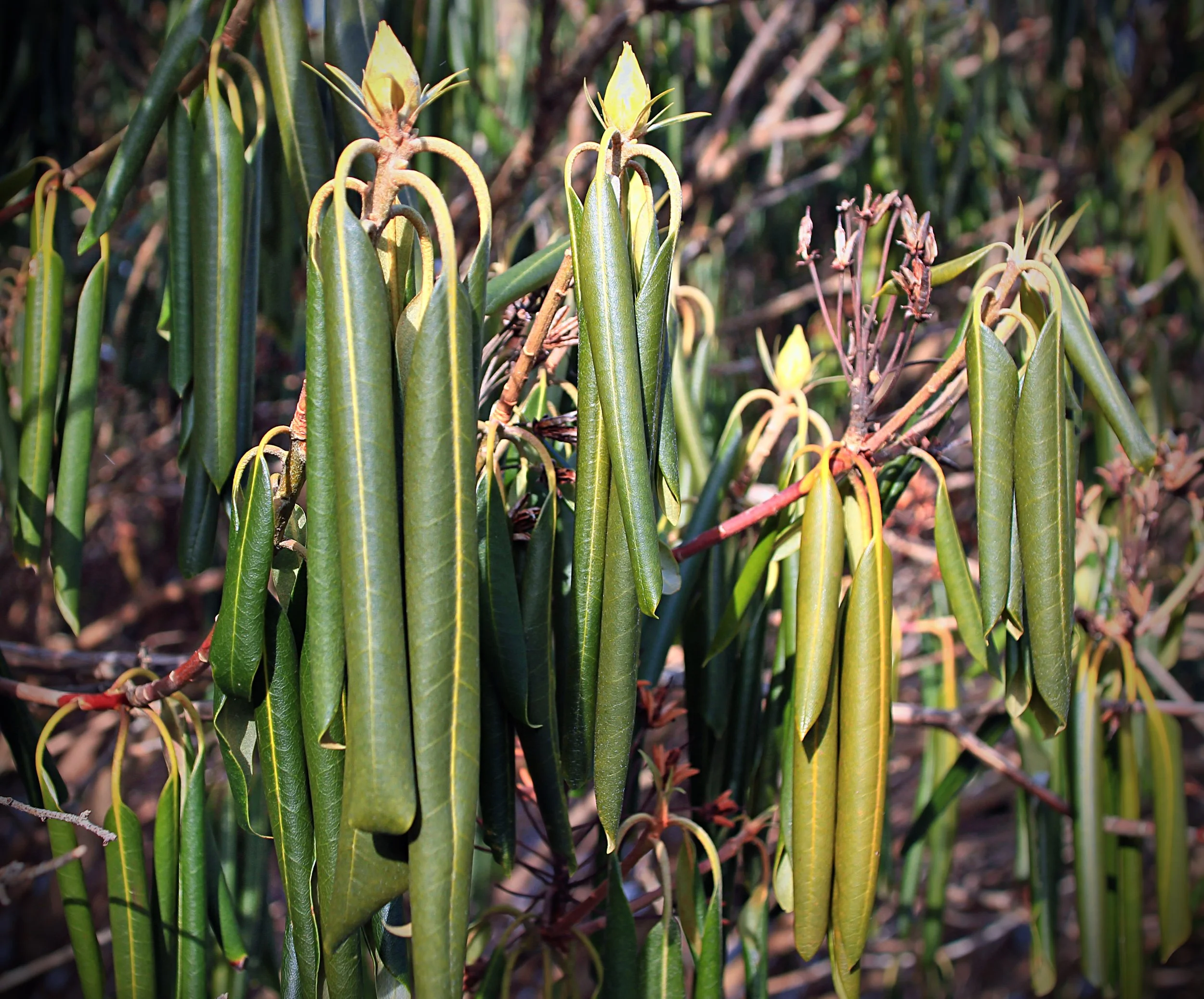I added a new word to my gardening vocabulary this week: thermotropism. In simple words, this is a plant’s reaction to temperature changes. Rhododendron exhibits one of the most obvious reactions to cold weather. When the weather turns frigid, Rhododendron leaves curl inward. It may look like the plant is suffering from drought, but instead it is reducing the surface area exposed to cold to keep internal moisture from evaporating.
While I was researching thermotropism, I discovered an entire family of -isms in the horticulture world. Phototropism is when a plant moves in reaction to light (sun). I’m sure you have seen in your own gardens how sunflowers turn their heads to the east to catch the morning sun, then slowly turn toward the west as afternoon arrives. Foxgloves and daffodils do the same.
Thigmotropism is when a plant encounters a solid surface and reacts to it – like a morning glory curling around a trellis. A reaction to the presence of chemicals is chemotropism. Think of the way roots move towards areas of higher soil fertility. A plant’s reaction to gravity is called geotropism or gravitropism. Movement in search of water is hydrotropism. And some plants react to touch. The tickle of insect legs will cause a Venus Flytrap to snap closed around its next meal.
The southeast is predicted to experience a serious winter storm later this week, the first measurable snowfall in my town since 2022. It might be an insignificant event in the opinion of my friends that moved from Michigan, Minneapolis, and South Dakota. For this SC native, anything more than an inch of snowfall can rightfully be called a blizzard. So, I’m going to practice thermotropism, and wrap myself into a down duvet like a human taco. Friends, stay safe and warm!

